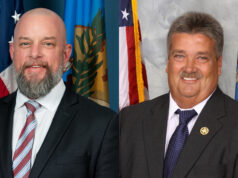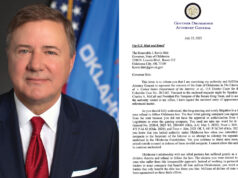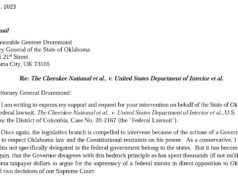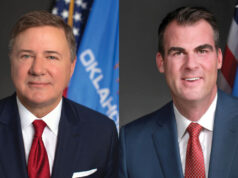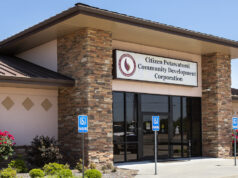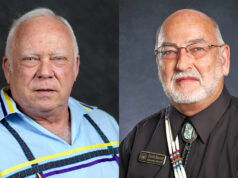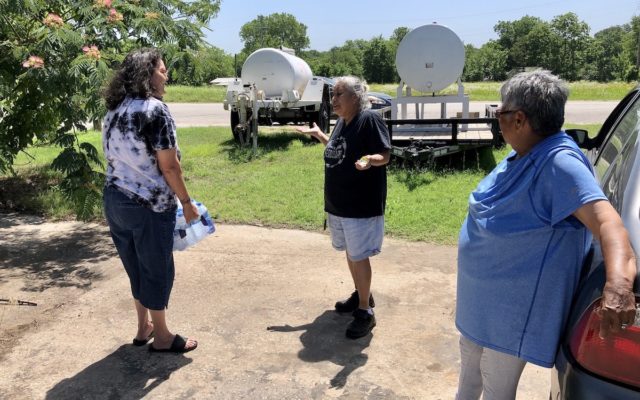
SASAKWA — With temperatures topping 100 degrees around Oklahoma and forecasts projecting more heat as August approaches, some residents of a small town in Seminole County have been without running water for more than two months. As the community of Sasakwa endures the crisis, government leaders at the local, tribal and state levels all seem unsure how to solve the issue.
Peggy Osceola Davis, a 70-year-old Sasakwa resident and Seminole Nation member, has sought water from a variety of charitable sources while she has been unable to draw her own water from the city system.
“It’s tiring on my body carrying water,” Davis said. “I can’t afford to keep buying water.”
Months into the situation, Sasakwa Mayor Brenda Myrick said workers now believe the issue has to do with a water well screen being clogged. Myrick said a formula is currently being created in order to pull the clog out of the screen. Until then, however, the town is turning its water system on and off every 24 hours.
“It’s got some kind of something in there,” Myrick said. “That’s what they’re doing the formula for, so they can put it down in there and suck all that stuff up out of the screen.”
Myrick said she was unsure who is developing the formula, but said the town has discussed drilling another well. However, the town would have to apply for and receive grants in order to fund the cost.
“We need money, that’s the big thing,” Myrick said. “The mighty dollar, we just don’t have it.”
Sasakwa is located in the southeast corner of Seminole County and within the corresponding boundary of the Seminole Nation of Oklahoma reservation. The Seminole Nation has provided the town with cases of water, water buffalos and various cleaning supplies to help with the situation. The Citizen Potawatomi Nation has also supplied a water buffalo. Myrick said Sasakwa citizens are “dealing with” the issue.
“We have bottled water and everything. We give out bottled water at six o’clock at night every night. The water is turned off at 12 o’clock, and then it’s turned back on at 12 o’clock the next day,” Myrick said. “Everybody’s dealing with it, and we’re doing alright with it. I mean, for the situation.”
Underscoring the confusion with the Sasakwa water system’s problems, some residents in the town are still receiving water, while others are not. Myrick said the reason for that is unknown.
Amanda and Billy Gibson are Sasakwa residents and Seminole Nation members who have been without water for months. Amanda Gibson said the issue presents a challenge for her husband’s health.
“We need water,” she said. “Just like everybody else, we need water.”
The Sasakwa water board has a scheduled meeting Monday, July 25 at 6:00 p.m. in the Sasakwa elementary school building, according to a meeting notice in the Sasakwa, OK curiosity Facebook group.
Brian Thomas Palmer: Sasakwa well is ‘almost a lost cause’
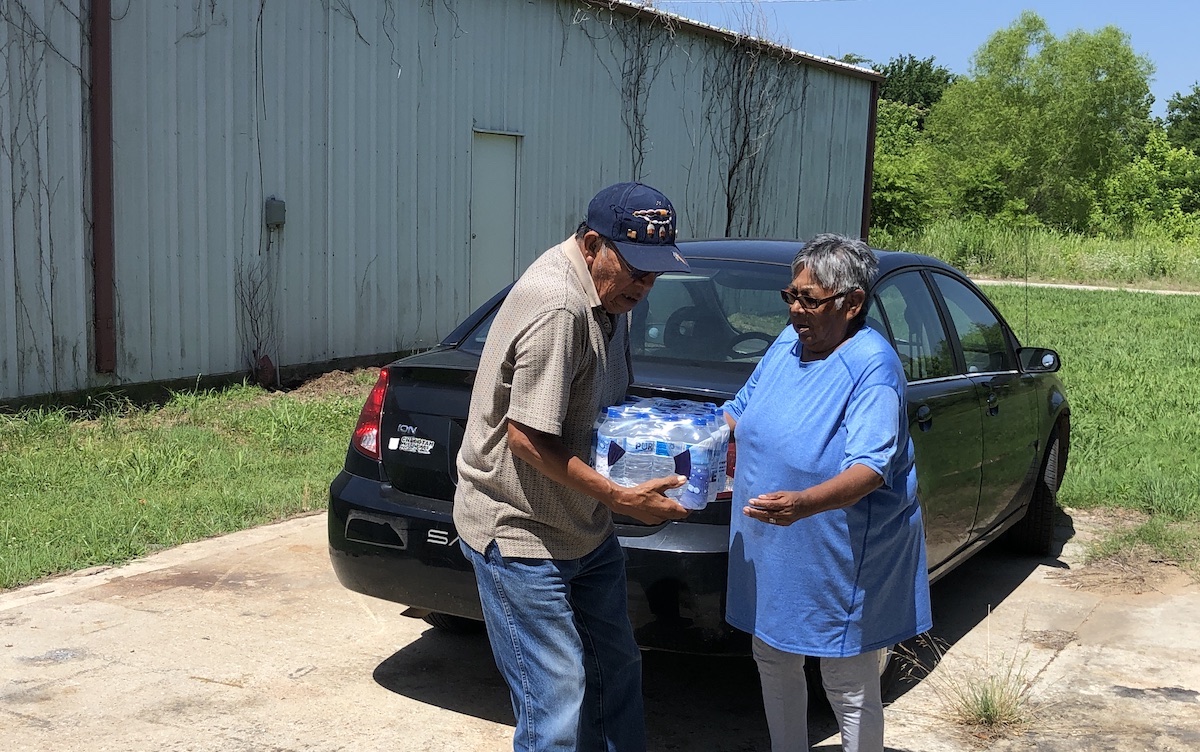
Brian Thomas Palmer, the assistant chief of the Seminole Nation, served on the Sasakwa Water Board for 10 years until he moved out of the town in 2014. Palmer said Sasakwa has dealt with water infrastructure issues for years.
When he sold his house, Palmer said he left 45 gallons of water in five-gallon jugs because he knew the town would need it.
“That was the norm. You had to plan for that. Summertime, there was going to be two weeks out of the year where you didn’t have water. Wintertime, if there was a power outage or lines froze, you weren’t going to have water,” Palmer said. “When you get out into these rural areas — or now you can stay out on the reservation lands — being able to go home and take a shower and do laundry isn’t guaranteed. It’s still surviving.”
Palmer said the town’s water system has not had enough preventative maintenance over the years to keep it running properly.
Sasakwa has to acidize its water wells consistently in order remove buildup of mineral deposits that may be halting well production, Palmer said. The town also uses gravel packing to filter sand and other minerals out of the water.
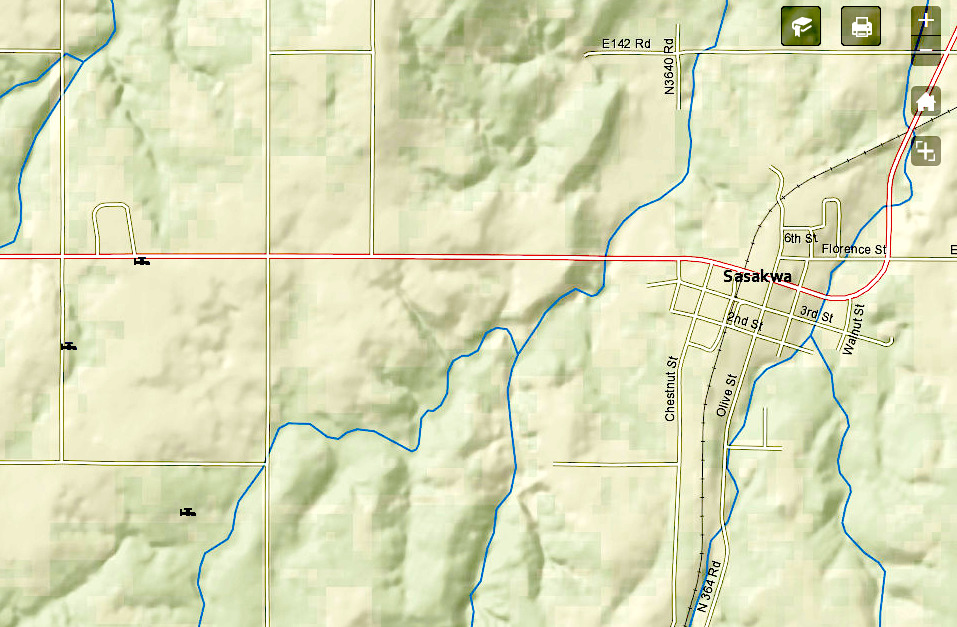
“The water quality is so poor down there, they have to — on a scheduled basis — go and acidize those wells to break up all the minerals. There is manganese, there is real high calcium deposits,” Palmer said. “That gravel pack is basically kind of a filter where the water collects and they pump out of.”
Palmer said he suspects the gravel pack may need to be flushed out of a specific well owing to the mineral buildup. Ultimately, like Myrick, Palmer said he believes another well may need to be drilled.
“You think of it like a straw in a packed cup of ice. That gravel is so packed. It’s got so much sediment, other buildup of calcium and other minerals like manganese (…) it can’t draw the water.”
Federal water data for Sasakwa indicate violations, including lead levels in five of 35 samples.
‘When can we go back to normal?’
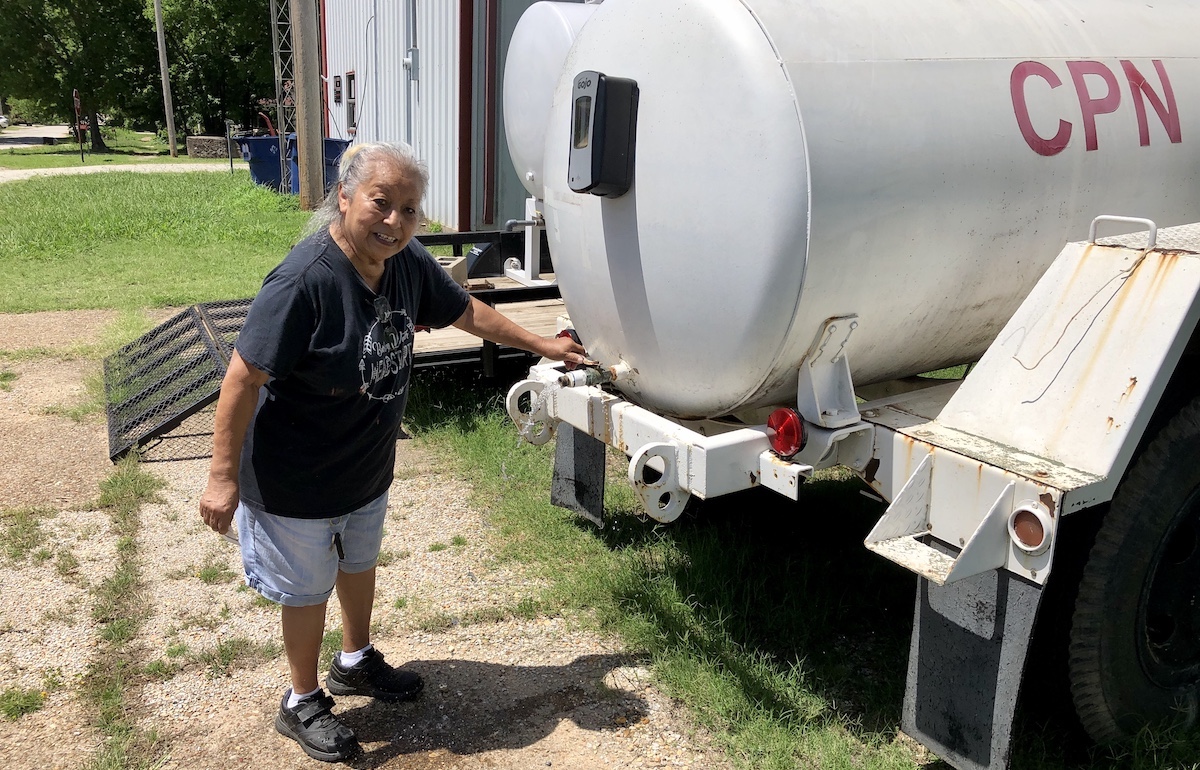
In Oklahoma, the only sources of recurring revenue for municipalities are sales tax and utility or waste services. Owing to Sasakwa’s limited sales tax revenue, the town is seeking grants to pay for water infrastructure improvements.
“We’ve had trouble with our audits. People don’t want to do our audits, because we’re such a little town that they’re not going to make any money, so they quit doing them,” Myrick said. “We have to have audits to get grants, so we have got to find an auditor.”
Robby Short, communications and marketing coordinator for the Oklahoma Water Resources Board, said the town of Sasakwa recently submitted an application for a Clean Water State Revolving Fund request for $250,000 to finance “lagoon and lift station work.”
Myrick said she believes Sasakwa has more than 300 residents currently.
Davis moved back to Sasakwa after living in Florida and said she is frustrated by a lack of communication on the water issue.
“What is the problem and when is it going to be fixed? When can we go back to normal? I know nothing,” Davis said.
Rep. Danny Williams (R-Seminole) said the lack of reserve money in rural towns make these crises difficult to solve.
“Here’s the problem. These small towns have no reserves. Every time something bad happens, I don’t know if it’s our job to keep them alive, or is it our job to assist them?” Williams said. “But, at some point, you have to make a decision if it’s survivable.”
Williams believes money from the American Rescue Plan Act should be allocated to these sorts of water projects.
“We should go in and probably take a significant amount of ARPA money and make it available for special needs projects like Sasakwa, Konawa, Cromwell,” Williams said.
State legislators have taken some action toward that goal. Senate Bill 429 — which was passed into law during the regular legislative session — allows the Oklahoma Water Resources Board to authorize a grant program which allocates $20 million of American Rescue Plan Act funds to match tribal investments in rural water infrastructure projects within areas of the state that are tribal reservations.
“What these dollars are doing is matching state ARPA money with tribal ARPA money, which will then be matched with city and county ARPA money and potentially other resources as well,” said House Speaker Pro Tempore Kyle Hilbert (R-Depew).
Palmer said allocating his tribe’s ARPA funds to Sasakwa would require approval from the Seminole Nation’s General Council. He does not believe that would be approved.
“Given the fact that the General Council did not support a similar water project for the nation’s immediate needs, it would be very difficult for them to support a municipality,” Palmer said.
In totality, access to water and water infrastructure improvements remain a sprawling issue across rural Oklahoma.
“I believe when we looked at our total ARPA asks statewide, it was more than $3 billion,” Hilbert said. “So we could spend every dime that we have on water projects and still have more water issues across the state.”
(Editor’s note: Tres Savage contributed to this story by conducting interviews.)
(Correction: This article was updated at 9:10 a.m. Friday, July 22, to correct a mistake related to Davis, Amanda and Billy Gibson’s tribal membership. NonDoc regrets this error.)










